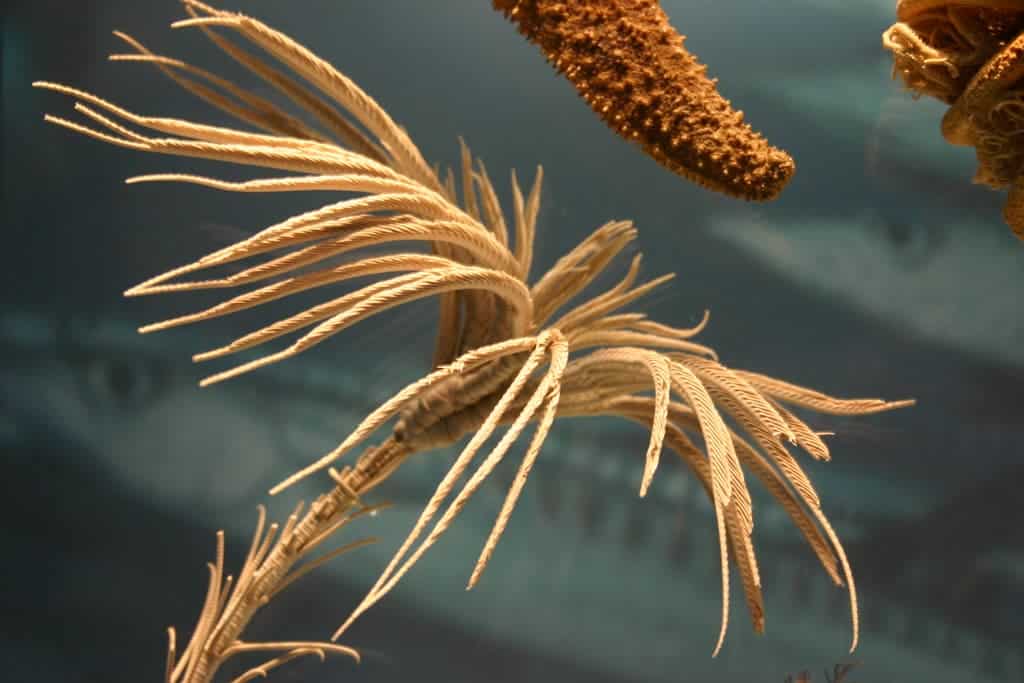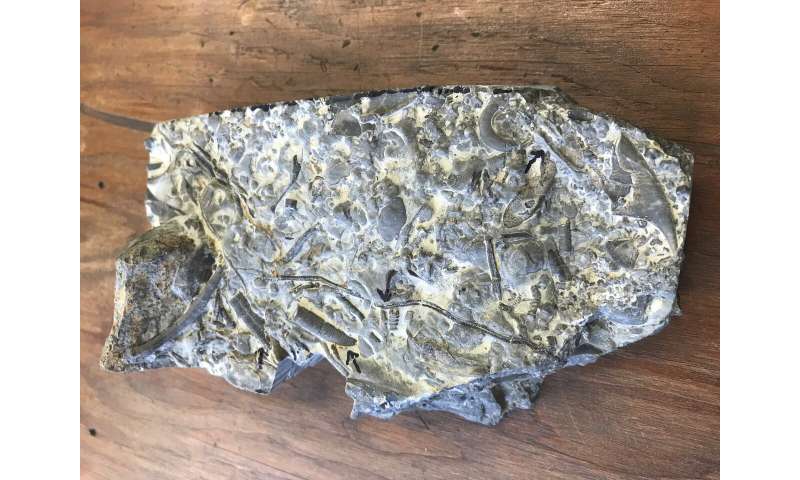New research into the evolutionary history of sea lilies is setting wrong assumptions from the 1800’s right.

Image credits Ryan Somma / Flickr.
Sea lilies, or ‘crinoids’, are part of an ancient lineage. Our earliest evidence of them come from around 480 million years ago, way before the dinosaurs popped in. Sea lilies are related to sea urchins and starfish, and are formed from a long slender stalk and feathery arms.
Over the last two centuries, the prevailing theory around sea lilies was that they were directly descended from ancient organisms that resembled them in shape and structure (cystoids). However, that theory has been challenged over time. The current paper aims to put that debate to rest by describing a newly-discovered species of extinct sea lily, and how it fits in the family’s evolutionary history.
A song of plates and lilies
“These early fossils provide new key evidence showing that what we had thought about the origin of sea lilies since 1846 is wrong,” says Tom Guensburg, the paper’s lead author and a research associate at the Field Museum in Chicago. “It’s not very often that we’re challenging ideas that are almost two hundred years old.”
Crinoids spend their adult lives anchored to the seafloor. Their stalks end in a cluster of feather- or fern-like arms that handle feeding: they filter plankton floating around in the water. They come in many colors and quite a variety of shapes and sizes, making them look very flower-like (hence the name).
“They look plant-like, but when you actually look at their bodies, you find all the usual anatomy of complex animals like a digestive tract and nervous system–they’re closer to vertebrates, and us, than almost any other invertebrate animals,” says Guensburg.
In 1846, researchers working on piecing together the family tree of the echinoderms — a phylum including sea lilies, starfish, sand dollars, sea urchins, sea cucumbers, and a number of extinct species — found cystoid fossils and assumed they must be closely related to today’s sea lilies. Around 100 years later, the team writes, this theory was called into question, as the similarities between the two species seemed to only be superficial.
In the paper, Guensburg and his colleagues describe a new kind of fossil sea lily named Athenacrinus broweri after the Greek goddess Athena. They chose this name as Athena is “often depicted with rangy, almost gangly limbs on ancient Greek vases”, and the fossil’s arms resemble that.

Image credits Field Museum, Kate Golembiewski.
Athenacrinus‘ arm structure helped the team piece together the evolutionary history of crinoids, which is linked to some of the earliest-known echinoderms, some of them up to 515 million years old. This group of animals hadn’t evolved arms yet, but their bodies did have plate structures seen in the arms of early crinoids. Past 450 million years ago, these structures had completely disappeared in sea lilies, being replaced with a different type of arm plating.
What modern sea lilies do have, the team explains, are tissue remnants inherited from echinoderms. As such, the team says that that early sea lilies from 480 million years ago are the missing link between their earliest ancestors and what we see in living crinoids. Cystoids, in contrast, have different arm structures entirely — suggesting that crinoids and cystoids are related only at the most primitive level in echinoderm history, when their lineages split.
“These new fossils provide for the first time an accurate picture of what the earliest crinoid arms were like, and they are unlike any cystoid in important ways,” says Guensburg; “No cystoid has such anatomy.”
“One of the most fascinating branches of the tree of life, echinoderms, needs rearranging,” he notes. “That’s a big deal.”
The paper “Athenacrinus n. gen. and other early echinoderm taxa inform crinoid origin and arm evolution” has been published in the Journal of Paleontology.









